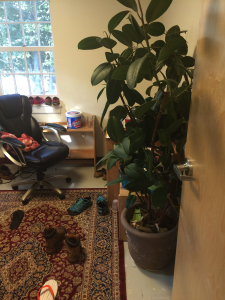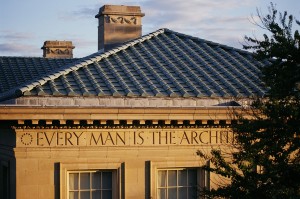Now I realize this class is about nature and the outdoors but I’m going to write about being inside. I decided to write this when I was walking through my house and looked in one of the other guys rooms and noticed he had a large rubber plant right next to his door.
Now apart from the strange smell, (turns out he spilled his watering jug and the smell was a wet carpet) the plant was actually a pretty cool addition to the room.
It is pretty well known that having plants indoors is good for things like air purification because they absorb CO2 that our bodies produce and then produce oxygen themselves. But in addition to physical benefits, plants might offer mental benefits, as well. Studies have shown having ornamental plants in the home or workplace can improve memory and efficiency. While getting outside and exploring nature everyday might not be realistic, having a piece of nature in your room or home can help keep that connection with Nature all the time.


